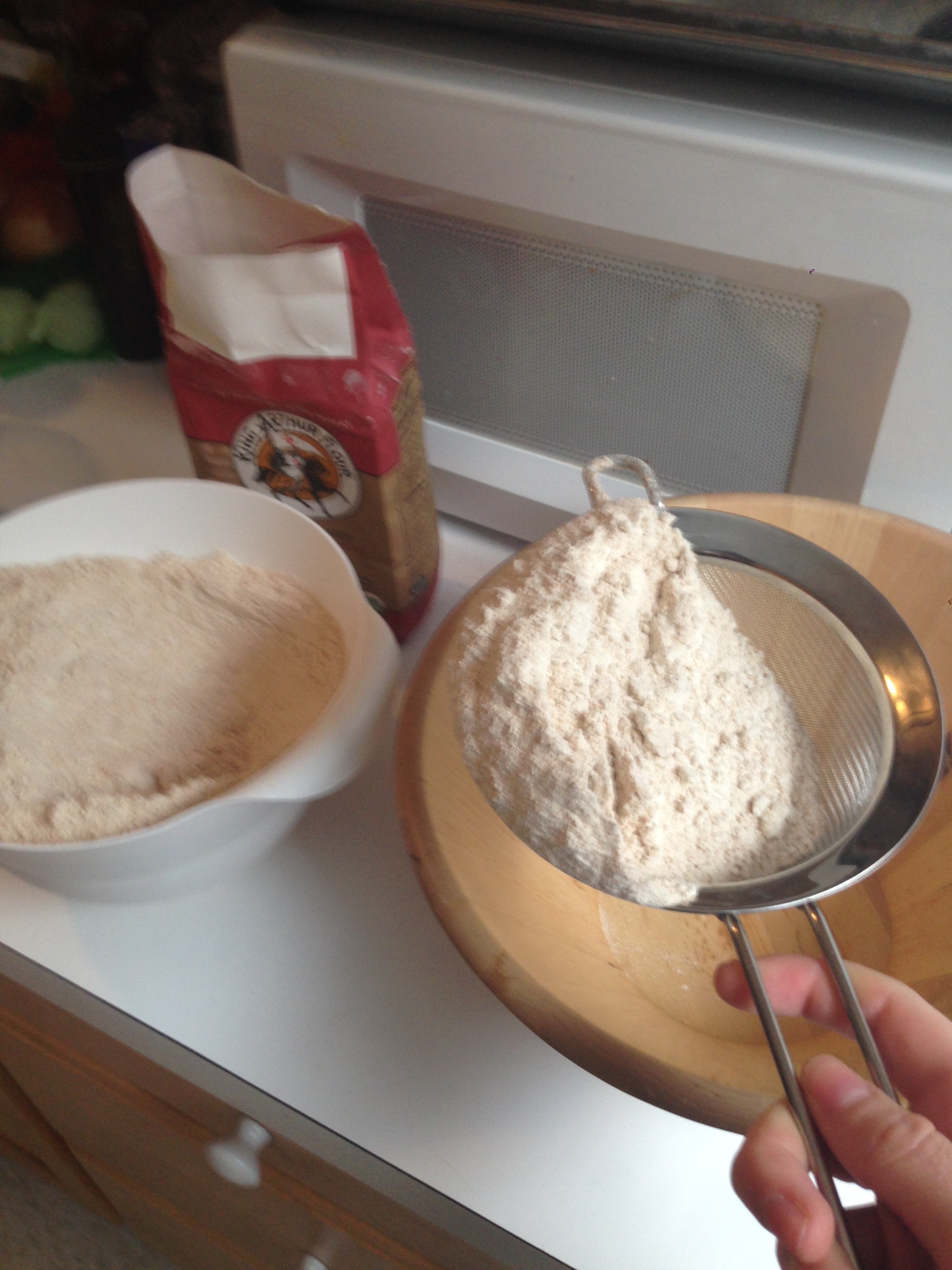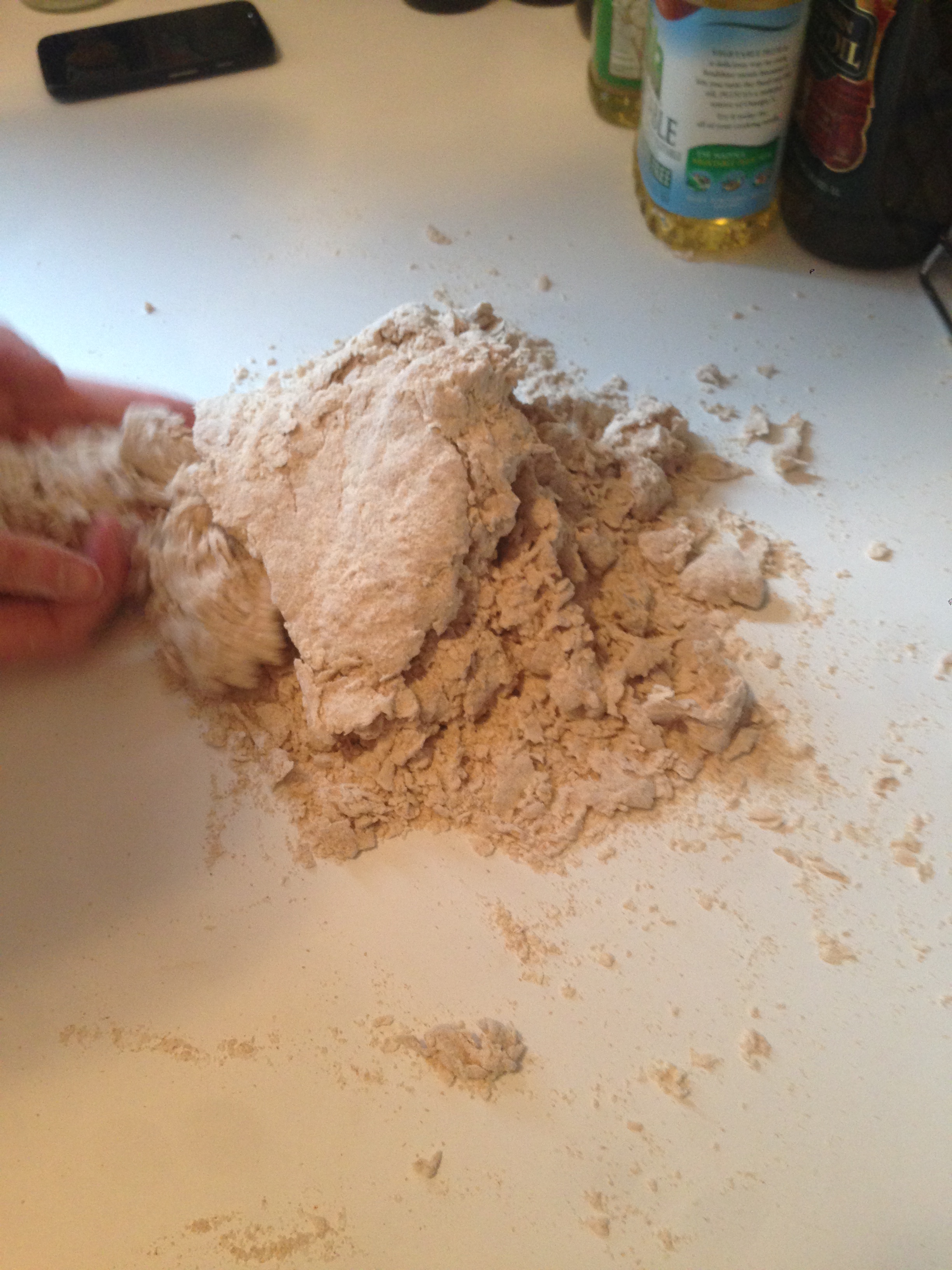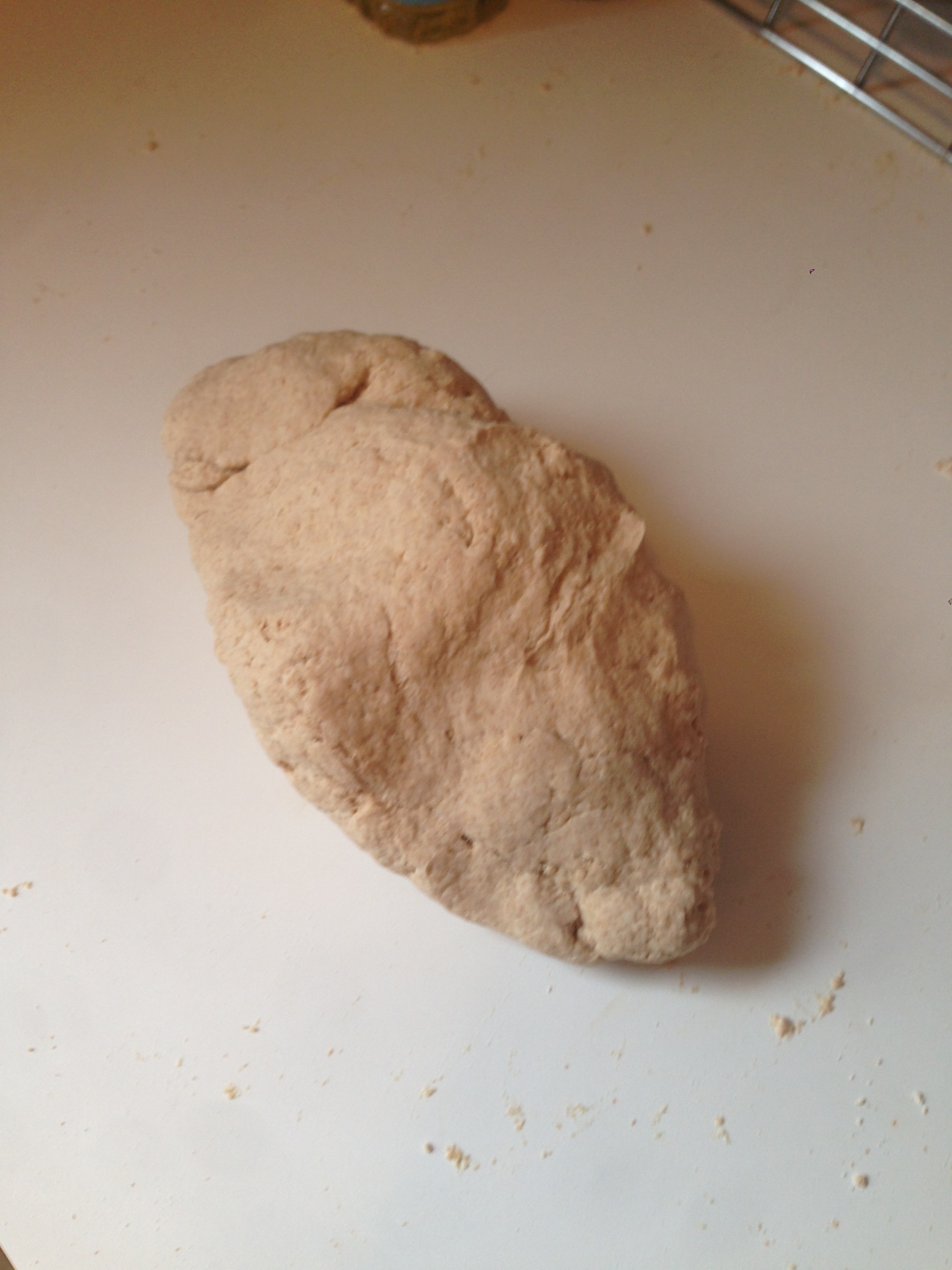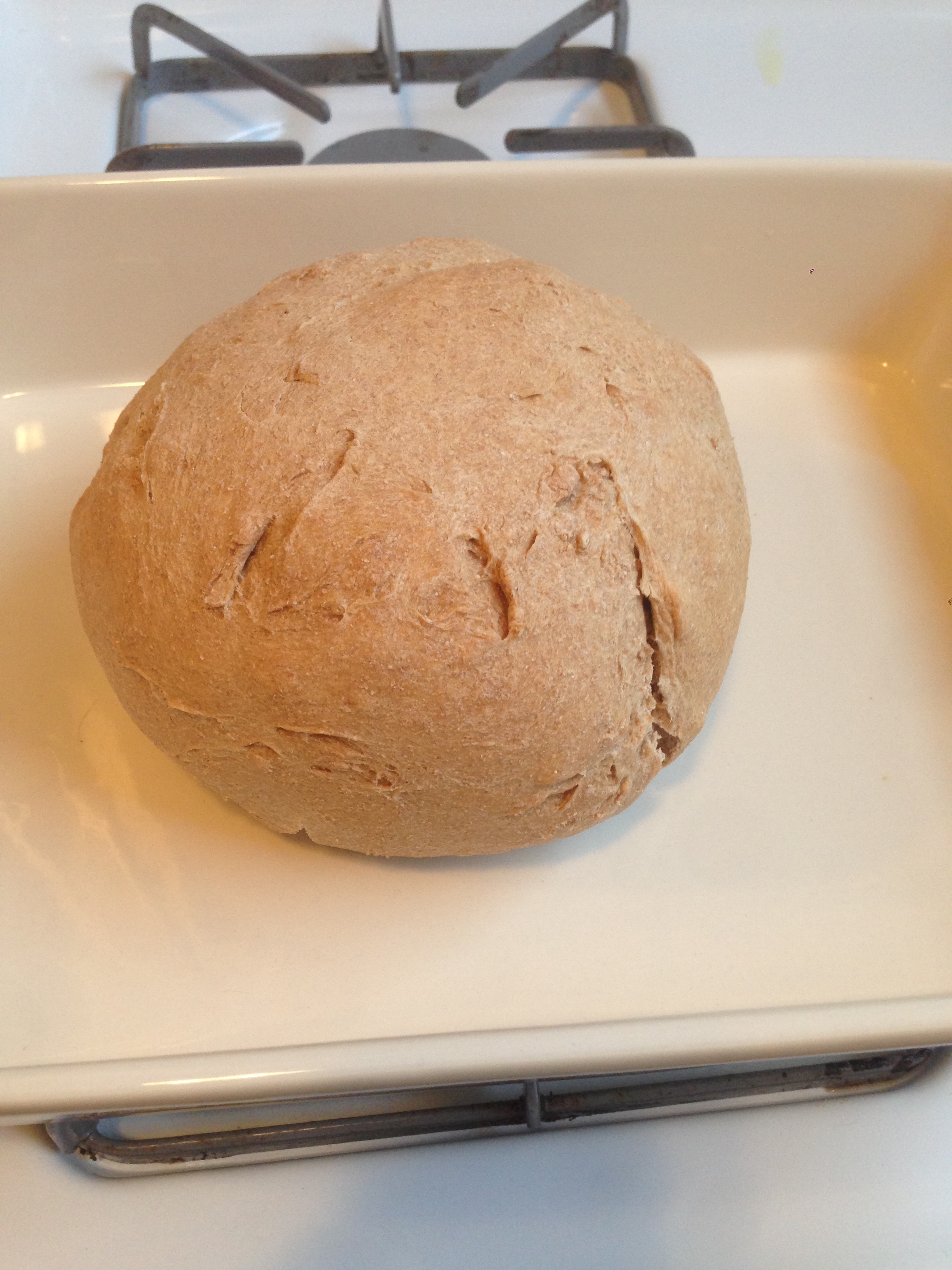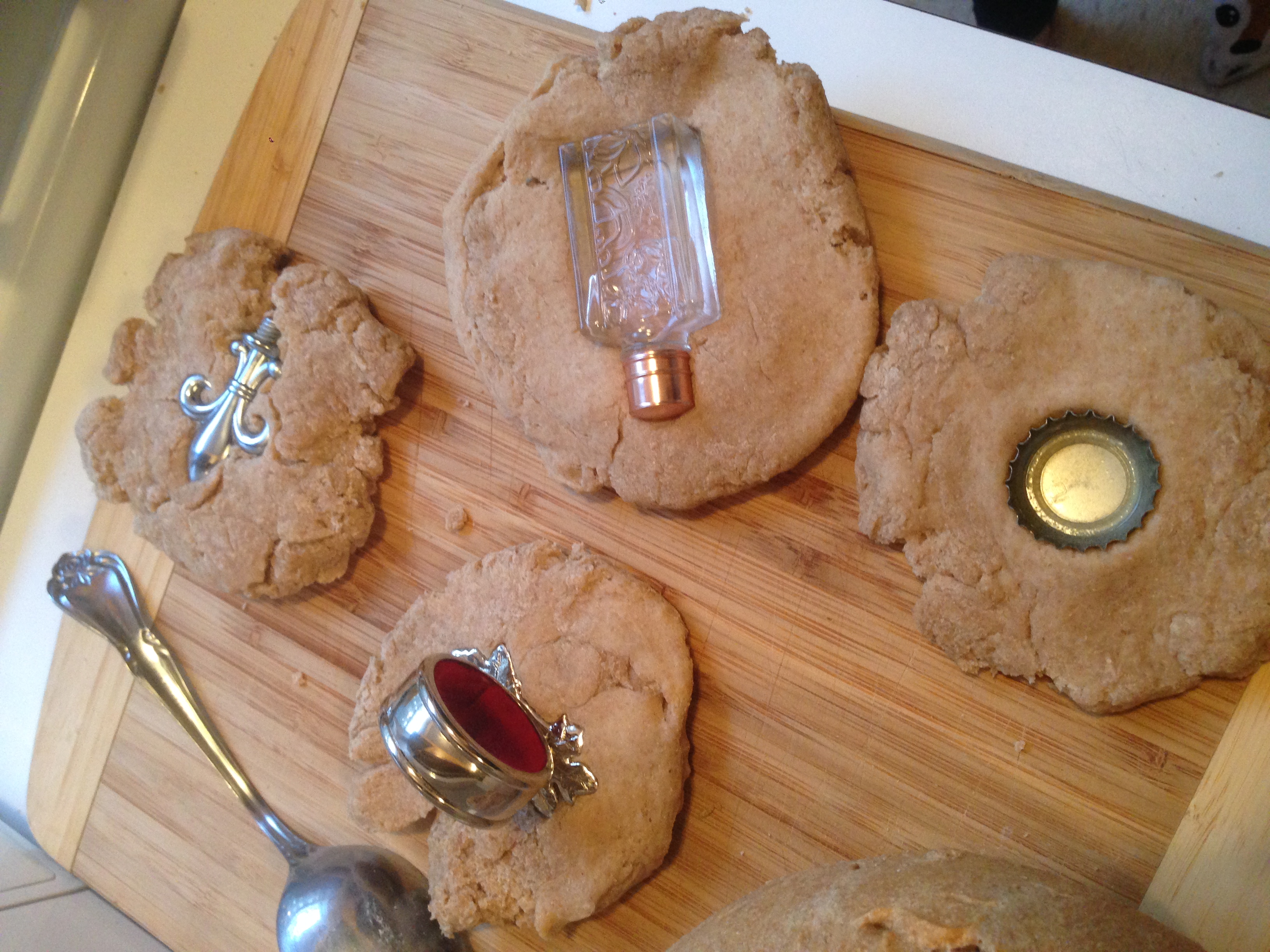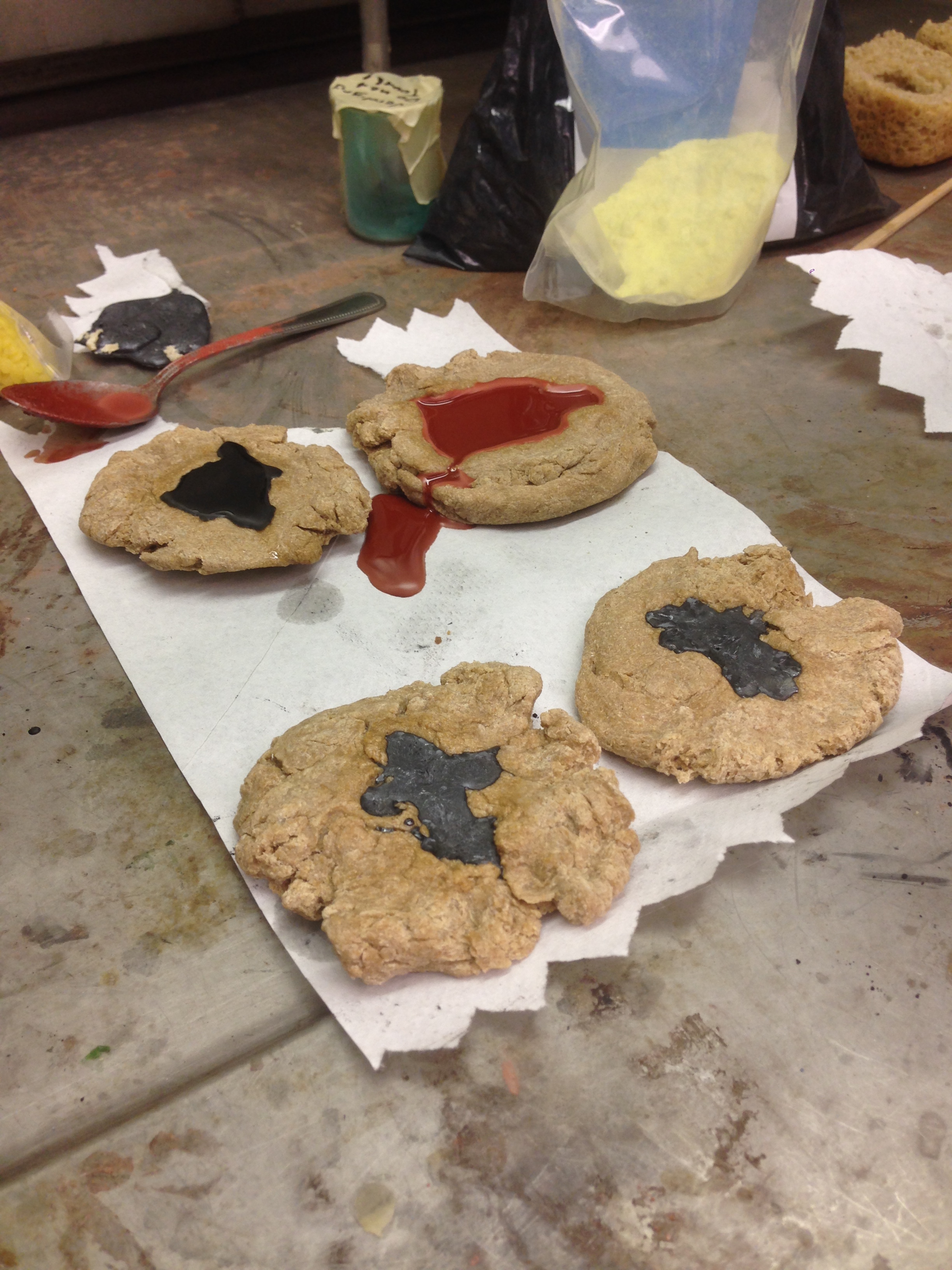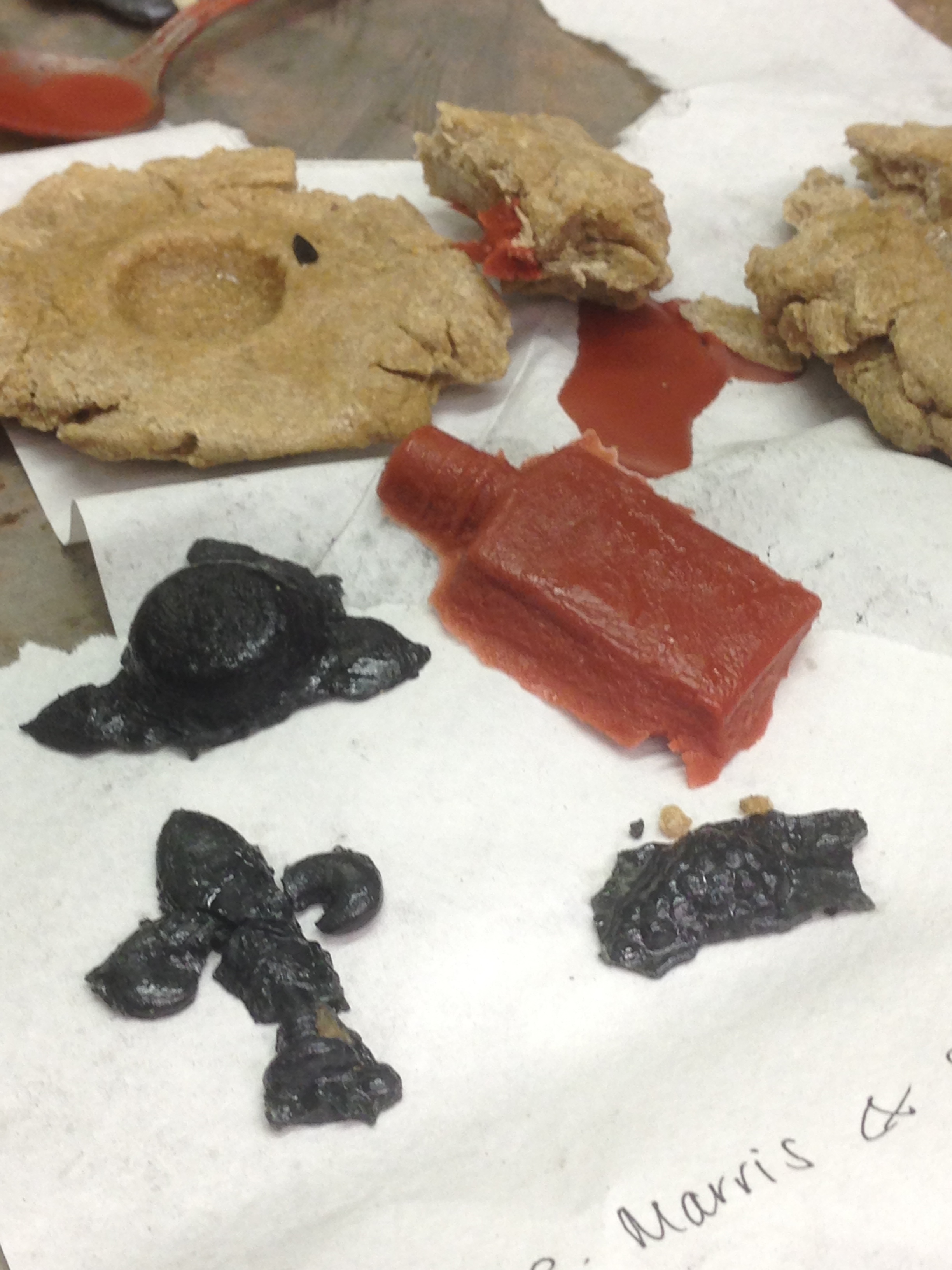Manuscript sources
- The relevant passage to creating bread molds and casting in sulfur is found on Folio 140 of BnF 640:
- <title id="p140v_a1">To cast in sulfur</title>
<ab id="p140v_b1">
To make a clean cast in sulfur, arrange the pith of some bread under the brazier, as you know how to do.
Mold whatever you want & leave it to dry & you will have a very clean work.</ab>
<note id="p140v_c1">
Try sulfur passed through melted wax, since it won't catch fire & won't make more little eyes.</note>
<title id="p140v_a2">Molding and reducing a big piece</title>
<ab id="p140v_b2">
Mold it with the pith of the bread[919] just out of the oven, or like that aforementioned, & and in drying out it
will diminish & by consequence so too the medal that you have cast. You can, in this way, in lengthening out
or enlarging the imprinted bread, vary the figure & from one face make several quite different ones. The
bread straight from the oven is best. And that which has been reheated twice shrinks more. You can cast
sulfur without letting the imprint on the bread dry, if you want to cast it as large as it is. But, if you want to let
it diminish, let it dry either more or less.</ab>
Other sources
- In order to supplement our understanding of the bread moulding process, we also looked for analogous casting recipes in various contemporary sources. These included:
- Hugh Plat's The Jewell House of Art and Nature (London, 1594). Plat's text has an entire book devoted to the casting/moulding process. The recipe Plat gives for the moulding process involves making a coffin "like unto a pye" of loam (apparently a combination of sand, clay, and organic material), in which a sprig of a herb (Plat suggests rosemary or thyme) can be cast by pouring over some 'pap', then letting it stand for 15 minutes, allowing the pap to harden. The herb can then be burnt out of the mould in "an earthern furnace", and a precious metal such as gold or silver can be poured into the now-empty mould. Once this has solidified, then the mould can be dipped in cold water in order to shatter it and release the herb casting. This recipe was useful to a certain extent in understanding the casting process (particularly as the material used to cast the item, pap, seemed somewhat analogous to the ingredients for bread); however, the recipe describes the construction of a two-piece mould rather than a one-piece mould, and his method of extracting the item to be cast by burning it out seemed unlikely to be something that we would try to replicate with our own mould!
- Plat also describes casting by means of plaster of Paris
- Girolamo Ruscelli, The Secrets of the reuerende Maister Alexis of Piemount...(London, 1558). Ruscelli seems to imply that the casting process is somewhat ad hoc in nature, and relies on whichever materials one has to hand: "First of all, you must have always the earth or sande ready, wherein you wyll fashion and fourme your work: but because there be dyvers sortes, and everye man dresseth it as he can gette it, and as he hath skill in making it, we will put here some of the surest and most parfitest, and of divers kyndes, to the end that if a man canot get or make the one, he may evermore have recourse to the other". This perhaps goes some way to suggesting why bread would be used for casting in the first place: because it would be something that most households would have to hand on a daily basis, and would therefore be convenient and render the casting process that much quicker.
- Theophilus, De Diversis Artibus. Theophilus discusses moulds made of both iron (XXIV, Book 2) and wood (XXVI, Book 2).
- Cennini, The Craftsman's Handbook. Cennin discusses the casting of medals in clay or in plaster on p. 130: "If you wish to cast medals, you may cast them in clay or in plaster. Get them dry, and then melt some sulphur; get it cast in these moulds, and it will be done"
Finding a recipe
- Using the links provided in the assignment, we found our way to a recipe for "French Bread" contained in a manuscript hosted by the DIY History Project. (Szathmary Culinary Manuscripts and Cookbooks --> Robert Godfrey Receipts, 1665-1799.) That recipe was as follows:
- To make French Bread. Take a quantity of the finest flower you can gett and mingle it with milk and water of equall quantity and double the quantity of yest wch is used to be put in other manchett and mingle it so stiffer then you use to mingle it for a puddinge it must be laid in dry flower the space of 6 houres where it may be kept warme the oven must be hotter then for other manches then rowle it up in flower and put it in little dishes then put it quickly out of the dishes uppon the peele and put it in the oven quick it must stand 3 quarters of an houre it will rase best when it is hott yff hee puts salt in the bread it wilbe the heavier.
- We saw, however, that this recipe had been used by previous groups in last semester's group, so we thought it best to find another one.
- We looked up the word 'manchett' contained in this recipe, and found that it referred to another type of bread. In searching for sources about it, we found our way to a recipe for 'The making of fine manchet' in the 1594 English cookbook The Good Huswife's Handmaide for the Kitchin. That recipe was as follows:
- TAke halfe a bushell of fine flower twise boulted, and a gallon of faire luke warm water, almost a handful of white salt, and almost a pinte of yest, then temper all these together, without any more liquor, as hard as ye can handle it: then let it lie halfe an hower, then take it vp, and make your Manchetts, and let them stande almost an hower in the ouen.
- This recipe says it would make 25+ loaves, which is huge! To make sure we understood the measurements referred to, we looked at this page on the University of Nottingham's website. This allowed us to make the following calculations to cut down the recipe to 1/32nd of its original size:
- Half bushel = 2 pecks = 4 gallons = 16 quarts = 32 pints = 128 gills = 2,560 fluid ounces / 32 = 80 fluid ounces = 10 cups of flour
1 gallon = 4 quarts = 8 pints = 24 gills = 480 fluid ounces / 32 = 15 fluid ounces = 1 and 7/8th cups of water
1 pint = 4 gills = 80 fluid ounces / 32 = 2.5 fluid ounces = ~.5 cups of yeast/starter
- To 'boult/bolt' means to sieve, so the flour would have to be sifted twice. Our 'modern' recipe would start, therefore, as follows:
- Sift 10 cups of flour (we used whole wheat flour) twice.
- Slowly mix in ~ 2 cups of lukewarm water (we used Poland Spring water) and ~.5 cups of sourdough starter until you can manipulate the mixture into a dough.
- Knead your dough until it is smooth and elastic. Let it rise in a warm place, covered by a cloth, for 30 minutes.
- Bake at ~350 fahrenheit for approximately an hour.
Making the bread and pressing our molds
- Sifting the flour was hard, slow work! We also found that on both passes, our sieve was sifting out hard piths and husks from the whole wheat flour. We decided to discard these in favor of keeping the flour as fine as possible, which it indeed was becoming.
- After sifting five cups, we felt that we had enough flour for a decently sized loaf of bread. We therefore decided to cut our recipe in half again, and use only 1 cup of water and 1/4th of a cup of our starter.
- When we mixed in this water and starter, however, we found that the dough was extremely dry and hard to handle. We tried to follow the recipe's instruction not to add "any more liquor," but it was a bit hopeless - after 10-15 minutes of hard kneading the dough was still falling apart in many dry pieces.
- We decided to put the other cup of water and quarter cup of starter back in. We added the starter, then slowly poured the water, stopping when the dough started to be pliable and easy to handle - this happened after putting in half a cup of water. Our final recipe was: 5 cups twice-sifted whole wheat flour, 1/2 cup starter, 1.5 cups water.
- We let the bread rise for half an hour. It did not seem to grow much in size, but when we kneaded it again there were telltale air bubbles popping out of it to tell us that the yeast had had some effect.
- After shaping it into a ball, we let it cook in a ceramic dish in an oven which had been preheated to ~350 degrees fahrenheit.
- We checked the dough at 30 minutes, and then at 45. At this point the outside was forming a hard crust, and we started to worry about the inside drying out too much for us to scoop out a usable pith. We took the bread out after 50 minutes of cooking.
- We scooped out the inside of the bread immediately with spoons, and manipulated the dough into four molding pieces; it was very hot and still quite wet/raw. We pressed four objects: a small perfume bottle, a metal bottle cap, a metal fleur-de-lis, and a metal grapes-and-leaves motif.
- We were curious/concerned about the notes in BnF 640 saying that a drying bread mold would 'shrink' around the impression that had been made in it and distort its shape. To that end, we decided we would take out our two simple molding items (bottle and bottle cap) immediately after being pressed, but that we would leave our two more complicated shapes in the bread for 24 hours, to give them a chance to keep their forms despite drying out.
- The molds were stored in open plastic Tupperware containers, and in a drawer. (To keep them away from a curious feline, among other things...)
- 24 hours later, Caroline removed the two remaining objects. This was hard work, as they were very much stuck in the bread, and cracks formed around the edges and on the surface of the molds as she pulled them out. In the end, our caution about shrinkage may not have been necessary, as all four molds remained quite wet and felt slightly squishy when pressed.
Casting in wax and sulfur
- In the lab on February 9th, we decided we would cast two shapes in sulfur, and two in wax. We chose linseed as our separator for all four items.
- Brushing the linseed oil into our molds suddenly made visible some incredible detail on all of our objects - there was no way we would have seen this otherwise.
- The fleur-de-lis and the grapes-leaves motif were cast in black sulfur. Though we captured some very good detail, it was very hard to get the bread off of the molds, and the fleur-de-lis was so thin that it broke into several pieces. This could have been fixed by creating a much deeper initial impression in a thicker piece of bread pith.
- The bottle and the bottle cap were cast in red and green wax, respectively. Both of these shapes came out well, though not in as fine detail as the sulfur. It was also possible to see linseed oil still clinging to the outside of the bottle cap - it looked like we had brushed too much into the mold in that case.
- Three of the molds - the bottle, the fleur-de-lis, and the grape-leaves - leaked through various cracks. It was clear that we needed thicker, denser, and bigger bread pieces to really make a completely tight mold.
Photos
